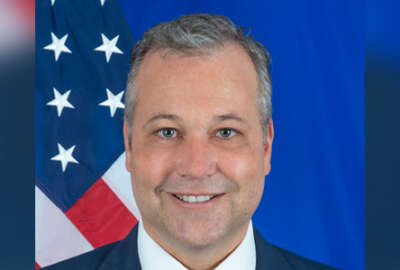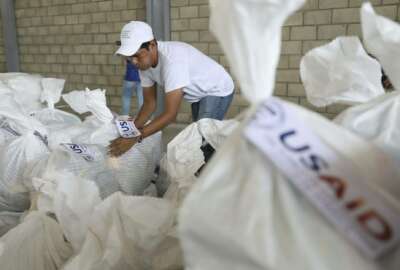
USAID digital strategy opens door to workforce proficiency in ‘cutting-edge technologies’
The new strategy focuses on international cooperation, akin to the U.S.'s agreement on ethical use of artificial intelligence with 40 countries through the...
Whether it’s improving tax compliance in the Philippines or building trust and transparency in the Ukrainian government, the U.S. Agency for International Development sees digital platforms as a force multiplier for its development work overseas.
In order to focus that mission in the face of emerging technology, USAID launched its first digital strategy, focused on delivering “measurable development and humanitarian assistance” through digital tools and making those online platforms open and inclusive across the globe.
“We expect steady gains in the adoption of digital technology in our current work, given the speed at which digital tools morph and change, those gains will soon eclipse all of our accomplishments today,” USAID’s Deputy Administrator Bonnie Glick said in a virtual keynote Wednesday hosted by the Center for Strategic and International Studies.
While a step in a new direction for the agency, the strategy dovetails with other policies, such as its 2019 guidance on Considerations for Using Data Responsibly, or its 2014 guidance of electronic payments and awards for the agency’s acquisition workforce.
Similarly, this strategy focuses on international cooperation, akin to the U.S.’s agreement on ethical use of artificial intelligence with 40 countries through the Organization for Economic Cooperation and Development.
Glick said the digital strategy will lead to training and reskilling of its workforce, and including tech skill proficiency into performance evaluations.
“We want to be considered an agency at the forefront of recruiting people with tech and innovation skills, so that they can become leaders of the USAID workforce,” she said. “We want to have a staff that is trained, aware of and more used to using cutting-edge technologies.”
As the digital strategy notes, USAID’s Global Development Lab has trained more than 2,300 of its employees in emerging technologies like geographic information systems (GIS) since 2010.
Meanwhile, the agency’s Chief Information Officer provides staff with agency-wide guidance on agency-wide data use policy and standards.
“We must continue to equip our staff with modern digital tools for development and enable them to cultivate the necessary project management skills to design and oversee programming in a digital age,” the strategy states.
Bridging the global ‘digital divide’
Glick said USAID is “fundamentally optimistic” with how digital technologies can accelerate the spread of information and democratic values in developing nations, but added that these same innovations can expose the “digital divide” between rich and poor, as well as urban and rural communities.
More significantly, governments can and have used these same tools in ways that run counter to civil rights and civil liberties.
“We see regimes use the internet as a form of propaganda, we see regimes use digital technologies to track and to control their citizens and to subvert their freedom, and we’ve seen the use of digital technologies to advance the interests of regimes against free nations,” Glick said. “Indeed, we’ve seen that against us in the United States.”
USAID estimates that 4 billion people don’t have access to the internet, but before the agency works with industries and non-governmental organizations to stand up telecoms infrastructure overseas, Glick said those hit hardest by the digital divide should understand the appeal of having access to these digital platforms.
“We want to make sure that there is enough that’s appealing in the use of digital tool, particularly for the 4 billion people around the world today who don’t have access to these digital tools,” she said. “We need to make the safe use of digital technology digital tools appealing to people.”
That includes tracking the spread of the coronavirus pandemic and getting health information into the hands of individuals for future public health emergencies.
“While this specific pandemic was not planned for, we know that across time, across the world, we operate in an environment where there are epidemics. We have this digital strategy integrated and interwoven into everything that we’re working on, to include global health programs,” Glick said.
Over the last 20 years, USAID has invested $140 billion into global health programs.
Alternatively, Glick said the digital strategy could also support the agency’s mission of supporting women-owned small businesses through mobile payments.
“When you use mobile money in a transaction, you increase not just the security of the transaction, but the personal security of merchants, particularly women merchants in the marketplace,” she said. “They’re not walking around with bags of money, they’re walking around with a cell phone — which doesn’t even have to be a smartphone — that’s carrying their funding on it.”
“Our mission ultimately, is to end the need for foreign assistance,” Glick added. “And in order to do that, we have to partner with developing countries around the world on what we call their journey to self-reliance.”
Copyright © 2025 Federal News Network. All rights reserved. This website is not intended for users located within the European Economic Area.
Jory Heckman is a reporter at Federal News Network covering U.S. Postal Service, IRS, big data and technology issues.
Follow @jheckmanWFED
Related Stories





